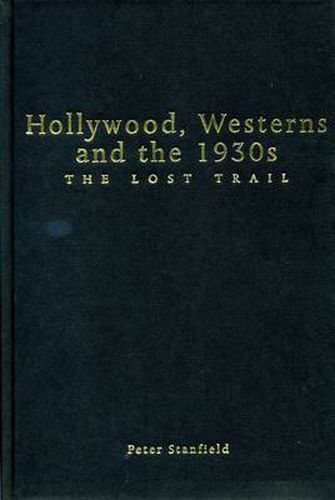Readings Newsletter
Become a Readings Member to make your shopping experience even easier.
Sign in or sign up for free!
You’re not far away from qualifying for FREE standard shipping within Australia
You’ve qualified for FREE standard shipping within Australia
The cart is loading…






This study recovers the context in which Westerns were produced, exhibited and viewed in the 1930s. By examining why the American film industry produced Westerns in the 1930s and by locating these films within the history of Hollywood’s production cycles and trends, Peter Stanfield reveals the limitations of previous studies. Instead of constructing a canon of isolated film classics , his research makes it clear that the hitherto marginalised B or series Western was central to the genre’s history in this period. The work explains the effect that Hollywood’s shift to synchronized sound had on the Western, and discusses the studios’ huge financial investment in the epic Westerns of the early years of the 1930s. It traces the subsequent decline and resurgence in Western production in the mid-1930s, and examines the deluge of A-feature Westerns produced in the 1939-1940 cycle, including Stagecoach , Dodge City , Jesse James , Destry Rides Again , Union Pacific and The Oklahoma Kid . Challenging many of the conventional critical assumptions about the Western, including the firmly held opinion that it was principally aimed at male viewers, the book highlights the significance of female audiences, the role of independent exhibitors, and of censorship in shaping film production. This book tells the lost story of the 1930s Western.
$9.00 standard shipping within Australia
FREE standard shipping within Australia for orders over $100.00
Express & International shipping calculated at checkout
This study recovers the context in which Westerns were produced, exhibited and viewed in the 1930s. By examining why the American film industry produced Westerns in the 1930s and by locating these films within the history of Hollywood’s production cycles and trends, Peter Stanfield reveals the limitations of previous studies. Instead of constructing a canon of isolated film classics , his research makes it clear that the hitherto marginalised B or series Western was central to the genre’s history in this period. The work explains the effect that Hollywood’s shift to synchronized sound had on the Western, and discusses the studios’ huge financial investment in the epic Westerns of the early years of the 1930s. It traces the subsequent decline and resurgence in Western production in the mid-1930s, and examines the deluge of A-feature Westerns produced in the 1939-1940 cycle, including Stagecoach , Dodge City , Jesse James , Destry Rides Again , Union Pacific and The Oklahoma Kid . Challenging many of the conventional critical assumptions about the Western, including the firmly held opinion that it was principally aimed at male viewers, the book highlights the significance of female audiences, the role of independent exhibitors, and of censorship in shaping film production. This book tells the lost story of the 1930s Western.